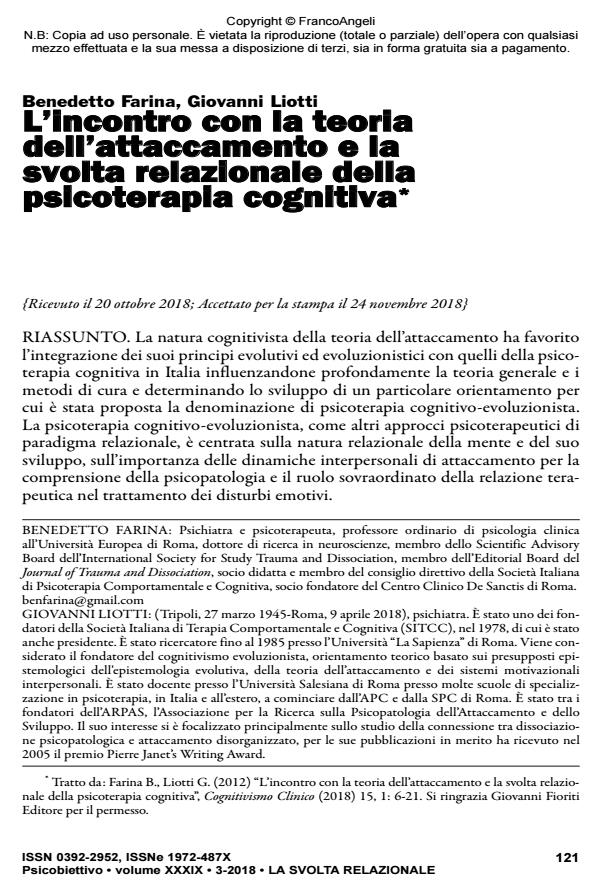The encounter with the attachment theory and the turning point of relational cognitive psychotherapy
Journal title PSICOBIETTIVO
Author/s Benedetto Farina, Giovanni Liotti
Publishing Year 2018 Issue 2018/3
Language Italian Pages 13 P. 121-133 File size 123 KB
DOI 10.3280/PSOB2018-003012
DOI is like a bar code for intellectual property: to have more infomation
click here
Below, you can see the article first page
If you want to buy this article in PDF format, you can do it, following the instructions to buy download credits

FrancoAngeli is member of Publishers International Linking Association, Inc (PILA), a not-for-profit association which run the CrossRef service enabling links to and from online scholarly content.
The cognitive nature of the attachment theory has favored the integration of its evolutionary principles with those of cognitive psychotherapy in Italy. This integration has profoundly influenced the general theory and treatment methods as well as determining the development of a specific orientation labeled cognitive-evolutionary psychotherapy. Cognitive-evolutionary psychotherapy, like other psychotherapeutic approaches of relational paradigm, is centered on the relational nature of the mind and its development, on the importance of interpersonal attachment dynamics for the understanding of psychopathology and the superordinate role of the therapeutic relationship in the treatment of emotional disorders.
Keywords: Cognitive Psychotherapy; Attachment Theory; Internal Operative Models; Therapeutic Alliance; Intersubjectivity; Evolutionism.
Benedetto Farina, Giovanni Liotti, L’incontro con la teoria dell’attaccamento e la svolta relazionale della psicoterapia cognitiva in "PSICOBIETTIVO" 3/2018, pp 121-133, DOI: 10.3280/PSOB2018-003012